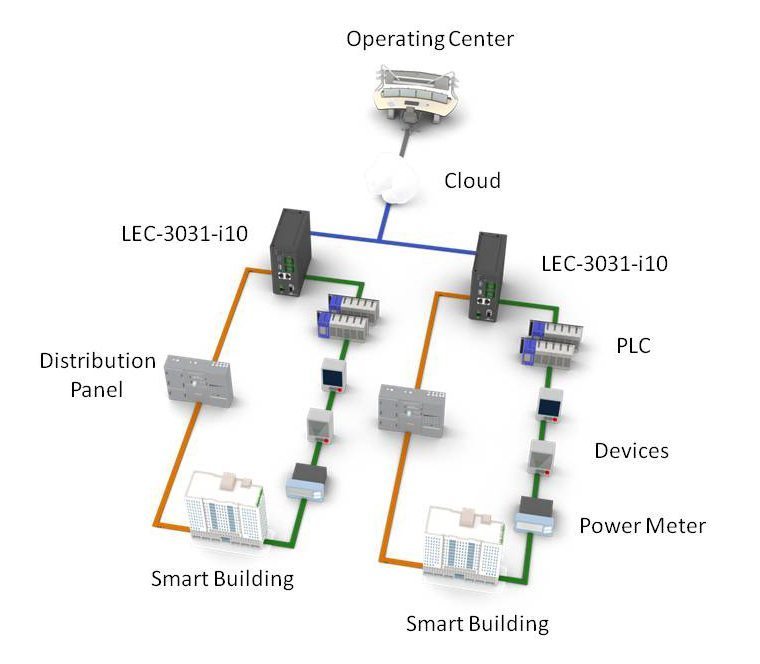Background
Most of the modern multi-story green buildings come with BAS (building automation system) for smart control of air circulation, water conservation and building climates. That is the reason why BAS-empowered buildings are sometimes referred to “smart buildings”. The BAS is a distributed control system based on computer networking to integrate monitoring and control subsystems, including HVAC (heating, ventilation and air conditioning), lighting, fire, security, humidity and other significant factors to reduce energy consumption while maintaining the comforts for the residents.
Today, the trend of BAS is going through a transition from traditionally proved robust, but proprietary protocols, like BACnet, to the open-standard networking protocols which allows standardized integration, deployment and maintenance. This has opened up huge market opportunity for smart buildings. According to recent analysis, the overall BAS market is expected to reach US $99.11 billion by 2022, an approximate 10.73% of CAGR from 2017 to 2022. Along with the needs for energy management, there is also a growing demand for deploying building security system and IoT applications leveraging open standard computer networks.
Requirements
A leading company in BAS from Australia came to Lanner for an optimal building automation gateway to meet the following requirements:
-
Multiple RS-485 serial ports in one single system
RS-485 is the necessary interface to communicate with PLC device, power meters, sensors and other controlling devices.
-
Multiple DI/DO ports for access control system
DIO is a critical protocol to interface with access control system like alarm sensors or motion detectors.
-
Rich storage solution in both SATA and mSATA expansion slot
High-capacity storage enables the system to accommodate large amount of recorded data from building subsystems and meters.
-
Wide range temperature support in harsh environment
BAS gateways are likely to be deployed in basements or other remote and harsh surroundings. Therefore, the gateway must be able to operate under extreme ambient temperature.
-
DIN Rail
DIN Rail mounting allows easier cable connections and device agility.
-
Surge protection to connect subsystems in the field site
In field sites, abnormal conditions may occur to cause electrical surge, which may severely damage subsystems and gateways. Thus, surge protection is mandatory.

Lanner’s Solution
To fulfill the requirements for modern BAS, Lanner presented LEC-3031-i10 as the building automation gateway that serves as the data concentrator to collect data from devices deployed in the building.
In order to communicate with all the building subsystems, LEC-3031-i10 provides maximum of ten RS-485 serial ports as the protocol to connect with sensors, meters and other controllers. With specific requests, LEC-3031-i10 is able to deliver up to 8 isolated DI/DO ports to connect various event trigger devices from access control systems
To record the data collected from all the building subsystems, LEC-3031-i10 is accompanied by a mSATA socket and a SATA drive bay for SSD. With two independent storage options, system owners can divide the uses for operating system and log data.
Since building subsystems are usually in basements or isolated remote corners, LEC-3031-i10 supports wide operating temperature from -40 to 70ºC to endure the harsh ambient environments. In addition, the fanless design allows to operate in a 24/7 manner without replacements of mechanical fans.
To ensure safety for the devices, surge protection and I/O isolation are implemented in LEC-3031-i10 to protect the devices from sudden electrical surges.